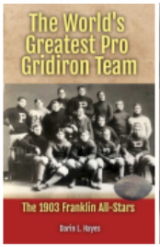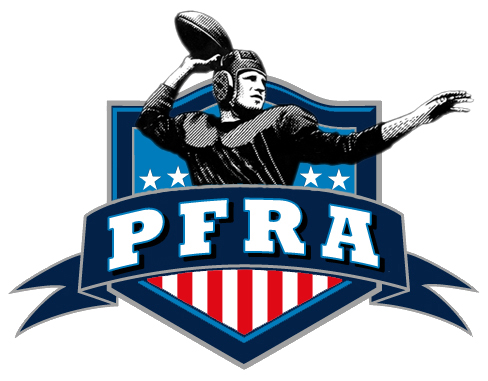Alabama Crimson Tide Gridiron Traditions and History
The Alabama Crimson Tide, a legendary program in college football, boasts a rich and storied history filled with triumphs, iconic players, and legendary coaches. This series will delve deep into the captivating past of the Crimson Tide, exploring their rise to dominance, their enduring legacy, and the key moments and figures that have shaped their place in college football history. From Bear Bryant's era to the modern-day dynasties, we'll uncover the secrets behind the Crimson Tide's enduring success and examine the impact they've had on the sport and its fans.
The University of Alabama's gridiron dynasty began in 1892, sparked by a law student named William G. Little. Returning from prep school in Massachusetts, Little brought his love for football and introduced it to fellow students. That year, Alabama formed its first team, led by Little as captain and E.B. Beaumont as coach. Though their inaugural season was winless, the seeds were sown for a program that would rise to become one of the most dominant in college football history.
'Bama has an excellent tradition of quality pigskin play and is a perennial contender for their respective conference title and sometimes even the National Championship.
On the following pages, we will cover:
-The Program's Origin
-The Biggest Games in School History
-The Program's Top Players
-The Program's Most Significant Coaches
-The Program's Logo and Mascot History
-The Team's Helmet Designs Over Time
-and so much more
Roll with the Tide's Gridiron history on this page!
The University of Alabama's gridiron dynasty began in 1892, sparked by a law student named William G. Little. Returning from prep school in Massachusetts, Little brought his love for football and introduced it to fellow students. That year, Alabama formed its first team, led by Little as captain and E.B. Beaumont as coach. Though their inaugural season was winless, the seeds were sown for a program that would rise to become one of the most dominant in college football history.
'Bama has an excellent tradition of quality pigskin play and is a perennial contender for their respective conference title and sometimes even the National Championship.
On the following pages, we will cover:
-The Program's Origin
-The Biggest Games in School History
-The Program's Top Players
-The Program's Most Significant Coaches
-The Program's Logo and Mascot History
-The Team's Helmet Designs Over Time
-and so much more
Roll with the Tide's Gridiron history on this page!
The First Meeting of Notre Dame and Penn State
The discourse presented in this episode revolves around the inaugural meeting of the Nittany Lions and the Fighting Irish, a significant event in the annals ... — www.youtube.com
The narrative unfolds around the historical encounter between Penn State and Notre Dame, marking their first clash on the football field. I engage in a detailed examination of the circumstances leading up to the 1913 game, emphasizing both teams' relatively modest standings prior to their ascendance in collegiate football. My personal bias as a Notre Dame enthusiast is evident, yet I strive to maintain an objective lens while discussing the significance of this matchup. The episode provides a platform to reflect on the transformative journey of both programs, from their nascent stages to their eventual prominence in the sport.
This information comes from his original post titled: The First Notre Dame-Penn State Game.
Timothy P. Brown and I engage in a spirited dialogue about the broader implications of this game, including the societal and cultural contexts of American football during the early 20th century. We discuss the impact of coaching philosophies and the evolution of playing styles that characterized the game at that time. The reference to the football landscape of the era, especially the religious affiliations of many institutions and their influence on the game, adds a rich layer to our discussion. I highlight the innovative strategies that coaches like Jesse Harper employed, which would lay the groundwork for future developments in college football strategies.
Ultimately, the discussion serves as a recounting of a specific game and a reflection on how historical narratives shape our understanding of contemporary college football. I encourage listeners to consider the broader implications of this history and its relevance to the current landscape of the sport, as well as to engage with the memories and traditions that continue to define these iconic programs.
-Takeaways
-The inaugural meeting of the Nittany Lions and the Fighting Irish occurred in 1913, marking a significant event in college football history.
-Both Notre Dame and Penn State have storied football programs that were not always as prominent as they are today.
-The first game between Notre Dame and Penn State took place when both teams were relatively lesser-known and unestablished in the national football scene.
-Darin Hayes and Timothy P. Brown delve into the historical context and significance of this classic college football matchup in their podcast.
-The podcast provides insights into college football's evolution and highlights team prominence's changing nature over the decades.
-Listeners are encouraged to explore footballarchaeology.com for further historical tidbits and insights related to the sport.
MY PODCASTS | ‣
Two of the Top Guards in College Football History are Remembered!
The 1941 College Football History Rewind
The 1941 college football season unfolded under a dark cloud. While teams across the nation battled for gridiron glory, the world was on the precipice of war... — www.youtube.com
The 1941 college football season unfolded under a dark cloud. While teams across the nation battled for gridiron glory, the world was on the precipice of war. This essay delves into a season marked by exceptional players, thrilling matchups, and an uncertain future.
Dominant Teams and Fierce Rivalries:
Multiple teams rose above the rest in 1941. The best may have been the University of Minnesota Golden Gophers. Minnesota, led by the Heisman Trophy-winning quarterback Bruce Smith, boasted an undefeated record (8-0) and a suffocating defense directed by head coach Bernie Bierman. The Gophers survived competitive games against Washington (14-6), Michigan (7-0), and Northwestern (8-7). Minnesota was ranked Number one in the AP poll and was a unanimous choice for the retroactive selectors to be the nation's Top Team of '41.
Texas, under the guidance of legendary coach Dana X. Bible, also enjoyed a winning season with a potent offense led by All-Americans: Malcolm Kutner (end), Guard Chal Daniel, Halfback Jack Crain, and Pete Layden at fullback. The Longhorns finished with an 8-1-1 campaign, their sole setback a 7-14 loss to TCU just before Thanksgiving.
Many considered these two teams, representing the Big Ten and Southwest Conferences, respectively, top contenders. Still, they were not alone in the ranks of the best in the nation.
Other contenders included the mighty Duke Blue Devils, who finished the regular season undefeated. Legendary head coach Wallace Wade led the team in his 11th season with the program.
Also at the top of the AP poll was the ever-present powerhouse Notre Dame Fighting Irish, under the first-year coach Frank Leahy, who took the Irish to an 8–0–1 record, as they outscored opponents by 189 to 64. They had a rising star in Quarterback Angelo Bertelli, who would eventually take home a significant award a few seasons later. The Irish stalemate with a 5-3-1 Army team at Yankee Stadium prevented ND from taking any claim to the mythical National title.
Grandaddy Flips Coasts
After the Japanese attacked Pearl Harbor, thrusting America into World War II depicts this notion. With the threat of a Japanese attack on the West Coast of the US, the Government decided to ask the Rose Bowl not to play in Pasadena. By December 16, Duke University invited the game and Oregon State to Duke's home stadium in Durham, North Carolina; after all, Western sites, such as Oregon, were eliminated as locations for the Rose Bowl Game to be played. Oregon accepted, and for the first time, the "Grand-daddy of them All" would be played in a place other than Pasadena, California.
In the heated contest, the Beavers rallied to score 13 points in the third quarter. Duke responded with another TD and a fourth-quarter safety to round out the final score of Oregon State 20, Duke 16. Those 16 points were the season's first ones the Beavers' opponents scored.
Other Bowl Games
Orange Bowl Miami, Fla.
1942
01/01/43
Alabama
37
Boston College
21
Sugar Bowl New Orleans, La.
1942
01/01/43
Tennessee
14
Tulsa
7
Cotton Bowl Dallas, Tex.
1942
01/01/43
Texas
14
Georgia Tech
7
Sun Bowl El Paso, Tex.
1942
01/01/43
Second Air Force
13
Hardin-Simmons
7
Summary of the Top Player Accolades{/b]
-Heisman Trophy: halfback Bruce Smith Minnesota. ,
-Maxwell Award: halfback Bill Dudley Virginia.
-Leading Rusher: Frank Sinkwich of Georgia with 1,103 rushing yards.
- Passing Leader: Bud Schwenk of Washington University in St. Louis with 1,457 passing yards,
-Leading Receiver: Hank Stanton of Arizona with 820 receiving yards.
-Top Scorer: Bill Dudley with 134 points.
[b]A Season of Change:
The events of December 7, 1941, with Japan's attack on Pearl Harbor, forever altered the landscape of American life, including college athletics. Many players soon enlisted in the military, putting their football careers on hold. The nation's focus shifted from the gridiron to the battlefields abroad. The 1941 college football season, despite its outstanding talent and thrilling matchups, would be remembered as a season overshadowed by the looming world war.
The legacy of the 1941 college football season lies not just in the exceptional players and undefeated teams but also in the context of a nation on the brink of war. It reminds us of the power of sports to bring people together, even during uncertain times. The 1941 college football season was a brief national pride and athletic excellence moment before the world stage took a dramatic turn.
A Shocking Upset in College Football History
This film captures a football game between the Texas Christian University Horned Frogs and the University of Texas at Austin Longhorns. (TCU players are wearing white jerseys.) The Southwest Conference match-up was played on November 18, 1961, at Texas Memorial Stadium (now known as Darrell K Royal-Texas Memorial Stadium) in Austin. Although the top-ranked Longhorns make several trips to the red zone, they fail to score, ultimately losing to 24-point underdog TCU in a 0-6 upset. The shocking def — texashistory.unt.edu
The 1961 Texas-TCU football game was one of the most shocking upsets in college football history. The #1 ranked Texas Longhorns, led by legendary coach Darrell Royal and featuring future Heisman Trophy winner Jimmy Saxton, were heavily favored against the unranked TCU Horned Frogs. However, TCU pulled off a stunning 6-0 victory that sent shockwaves through the college football world.
Pre-game Hype and Expectations:
The 1961 Longhorns were a dominant team, boasting an 8-1 record and a high-powered offense led by Saxton.
They were heavily favored to defeat TCU, who were 2-4-1 at the time.
The game attracted a sell-out crowd of 60,000 fans at Memorial Stadium in Austin, Texas, eager to witness the Longhorns' anticipated victory.
Unforeseen Turn of Events:
The game started according to script, with the Longhorns driving down the field on their opening possession.
However, disaster struck when Saxton was hit by a vicious knee to the head by TCU's Bobby Plummer.
Saxton left the game with a concussion, and the Longhorns' offense sputtered without their star player.
TCU capitalized on the momentum shift, scoring the game's only touchdown on a 50-yard pass from Ron Gibbs to Tommy Iles in the second quarter.
The Longhorns, despite having numerous opportunities to score, failed to convert, missing two crucial field goals.
A Shocking Upset and Lasting Legacy:
The final score of 6-0 stunned the college football world.
It marked the first time that a #1 ranked team had lost to an unranked opponent since 1950.
The upset also spoiled the Longhorns' hopes of winning their first national championship.
Related Titles
UNVEILING A CLASSIC RIVALRY, THE 1961 TEXAS-TCU GAMERelated Categories
COLLEGE FOOTBALL PROGRAMS, FOOTBALL HISTORY, GREATEST COLLEGE GAMES, MY PODCASTS, FOOTBALL ARCHAEOLOGYRelated Searches
Conference:SEC, altcategory:About Sports, altcategory:College HOF, altcategory:Football Archaeology, altcategory:Football Legend, Alabama Crimson Tide, college football history, Bear Bryant, Crimson Tide history, legendary coaches, Podcast:Football Archaeology, video:Football Archaeology, Notre Dame football, Penn State football, Nittany Lions, Fighting Irish, college football playoffs, football rivalries, football archaeology, EventDay:April 03, Podcast:Football, football history:1940s, Video:Gridiron Legends, sports:football, sports:college football









